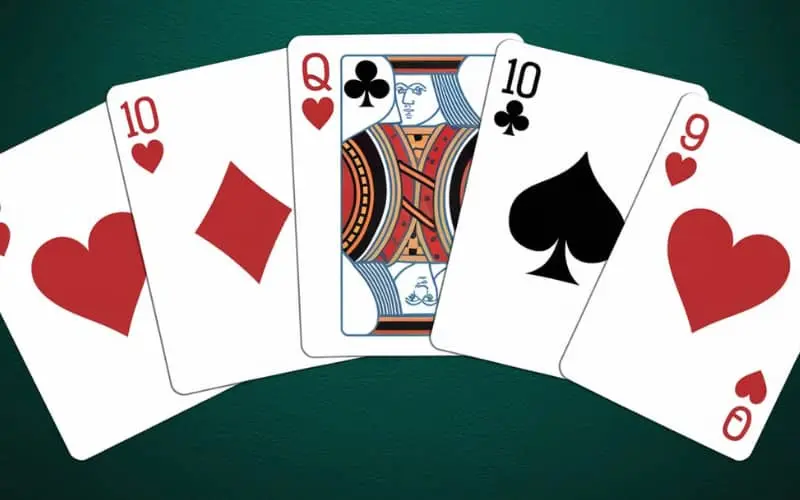Poker is one of the most popular card games worldwide, enjoyed by both amateurs and professionals. easy poker. Whether you’re just starting out or looking to improve your game, a solid understanding of poker hand rankings is essential to success. One of the best tools to help beginners grasp these rankings is a poker chart, which visually displays the different hands and their respective strengths. In this guide, we’ll explore the essentials of using a poker chart and how understanding hand rankings can give you a competitive edge at the table.
What Is a Poker Chart?
A poker chart is a helpful reference tool for both beginners and experienced players. A poker chart shows hand rankings visually, helping you decide between betting further or folding based on your hand’s strength to minimize losses.
Whether you’re playing Texas Hold’em, Omaha, or any other variant, the hand rankings remain the same. Let’s break down these rankings and understand how they appear on a typical poker chart.
The Basics of Poker Hand Rankings
Poker hand rankings are universally agreed upon in all forms of the game, essential for mastering poker. Players rank the hands based on how difficult they are to achieve. On a poker chart, you’ll typically see the strongest hands listed at the top and the weakest ones at the bottom.
Here’s a look at the rankings in order from strongest to weakest:
- Royal Flush – This is the highest-ranking hand in poker, and it’s incredibly rare. It consists of an Ace, King, Queen, Jack, and 10, all of the same suit. For example, a royal flush in spades would be A♠, K♠, Q♠, J♠, 10♠.
- Straight Flush – The second strongest hand, a straight flush is made up of five consecutive cards of the same suit. For example, 9♣, 8♣, 7♣, 6♣, and 5♣ would form a straight flush.
- Four of a Kind – Four cards of the same rank, like four aces, is known as four of a kind. For example, A♦, A♣, A♥, A♠, and any other card.
- Full House – A full house is made up of three cards of one rank and two cards of another. For instance, 3♠, 3♣, 3♦, 7♠, and 7♦ would be a full house.
- Flush – Five cards of the same suit, but not in consecutive order, make a flush. For example, K♠, 9♠, 6♠, 3♠, and 2♠ would form a flush.
- Straight – A straight is five consecutive cards of different suits. For instance, 10♠, 9♣, 8♦, 7♥, and 6♠ would make a straight.
- Three of a Kind – The hand includes three cards of the same rank (e.g., 4♠, 4♦, 4♣) and two unrelated cards.
- Two Pair – A two pair hand consists of two matching rank pairs, like Q♠, Q♦, 5♠, and 5♣.
- One Pair – A pair is two cards of the same rank, like J♠ and J♣, plus three other unrelated cards.
- High Card – If none of the above hands are formed, the highest single card in your hand is what counts. For instance, in a hand with K♠, 10♦, 7♠, 4♣, and 2♥, the king would be the high card.

Using a Poker Chart to Improve Your Game
For beginners, a poker chart is especially valuable in real-time gameplay, whether you’re playing online or at a physical table. Here’s how using a poker chart can enhance your game:
- Quick Reference: Beginners may find it difficult to instantly recognize the strength of their hands. Having a poker chart nearby allows you to quickly check your hand’s ranking, ensuring you make better-informed decisions on whether to bet, raise, or fold.
- Memorization: Regularly consulting a poker chart will help you memorize the hand rankings faster. Over time, you’ll be able to recall the order without needing to glance at the chart, speeding up your decision-making process.
- Strategic Betting: Knowing where your hand stands in comparison to other possible hands on the poker chart can help you craft more effective betting strategies. For instance, if you have a strong hand like a full house, you might want to bet more aggressively, whereas a weaker hand would prompt more cautious play.
- Reducing Mistakes: Poker is as much a game of strategy as it is of luck, and minimizing errors is key. By using a poker chart, you can avoid common mistakes, such as overvaluing a one-pair hand or missing the opportunity to bet big on a flush or full house.
Tips for Beginners
While a poker chart is an essential tool for beginners teen patti cc, there are other strategies that can help you improve your game:
- Practice Makes Perfect: The more you play, the more comfortable you’ll become with hand rankings. Play free online poker games or with friends to hone your skills.
- Pay Attention to Other Players: Poker isn’t just about the cards you hold; it’s also about reading your opponents. Watch for betting patterns, tells, and body language if you’re playing in person.
- Know When to Fold: One of the biggest mistakes beginners make is staying in the game too long with a weak hand. If your hand doesn’t rank high on the poker chart, don’t be afraid to fold early and cut your losses.
Conclusion
Understanding poker hand rankings is fundamental to becoming a skilled poker player, and a poker chart is the perfect tool to guide beginners. By regularly referring to a poker chart, you’ll quickly learn to evaluate the strength of your hand and make smarter betting decisions. Whether you’re aiming for a royal flush or deciding to fold with a high card, mastering these rankings will set you on the path to poker success.








